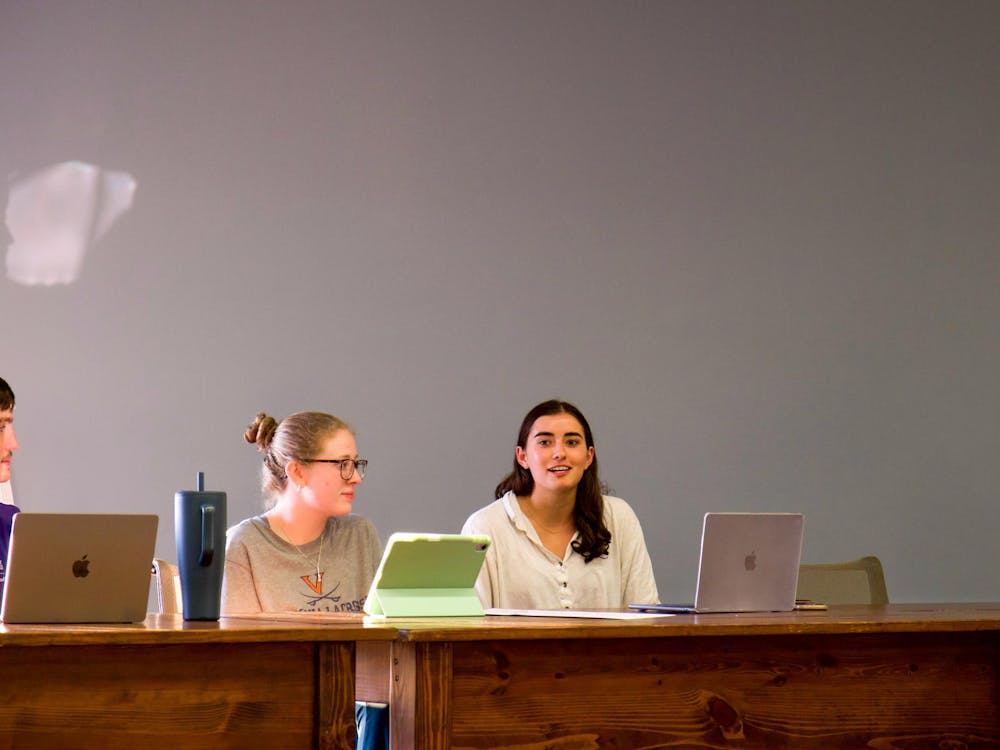After more than a year of submitting reports to state agencies and six months of very public controversy, the University soon will break ground on a 1,200-car parking garage on Ivy Road.
Virginia's Secretary of Administration made the decision Wednesday to allow the University to begin construction.
The garage, to be located behind the Cavalier Inn, will hold student, faculty and staff parking. It will replace the approximately 1,200 spaces that will be destroyed when construction begins next winter on a new basketball arena across from University Hall on Massie Road.
The Lewis Mountain Neighborhood Association vociferously has opposed the Ivy Road garage since March.
The LMNA says the project will add to traffic congestion at the Ivy Road/Emmett Street intersection and in surrounding areas, generate cut-through traffic and create an eyesore.
The Charlottesville City Council also has opposed the location of the garage.
But Virginia Secretary of Administration Sandra Bowen is allowing the University to begin the project as soon as an upcoming traffic study is underway.
The University agreed to pay for that study after two studies it commissioned, which found the garage would have no impact on traffic, were judged flawed by the Virginia Department of Transportation and the Virginia Department of Environmental Quality.
The University has agreed to allow the city and select community members to help monitor the new study and hire a firm to perform it.
The University may proceed with construction as soon as a firm is hired, and the parameters of the study are defined. University spokeswoman Louise Dudley said that should be within "a few weeks."
In a letter to University President John T. Casteen III, Bowen stipulated that the University pay for any traffic-flow improvements the study might recommend that are "directly related" to the parking garage.
The University already plans to pay to add a lane to Emmett Street.
The study is due to be completed Nov. 30.
LMNA president and engineering Prof. Arthur Lichtenberger reacted angrily to Bowen's decision to allow construction to proceed.
"We find that this ruling is an embarrassment to the state of Virginia," said Lichtenberger, who believes that Bowen's ruling was politically motivated. "We understood that the University has a lot of clout in Richmond."
Charlottesville mayor and architecture Prof. Maurice Cox said he was "disappointed" by the ruling.
Lichtenberger doesn't see the ruling as a total defeat for his organization, because VDOT will monitor the new study and because the University will have to pay for any road improvements the new study recommends that are "directly related" to the garage.
"However, what the term 'directly related' means concerns us," he said.
The confusion over traffic studies started when the University submitted an environmental impact study to VDOT and DEQ in the summer of 2001. That report claimed the garage would not create increased traffic.
VDOT and DEQ rejected that report, conducted by the firm Glatting and Brown, as unreliable because it used traffic counts that were too old and that in at least one case were conducted on slow traffic days.
The University then made changes to its plans for the garage and commissioned a second study, which also found no traffic impact, Lichtenberger said. But VDOT rejected that plan last month for the same reasons as the first.
In the old studies "the consultant relied on data that in some cases was two years old," University Landscape Architect Mary Hughes said. The new study will conduct new traffic counts to take into account possible affects of population growth, she said.
VDOT did not recommend whether the University should be allowed to commence building before a new study is completed.
The public debate over the garage began in March 2002, when LMNA members found out about plans for the garage and decided to oppose them. Residents said they were upset because the University had not consulted them earlier in the planning process.
Residents soon were meeting with Leonard Sandridge, University executive vice president and chief operating officer, and state politicians to voice their opposition. Signs popped up in Lewis Mountain front yards saying "Stop the 1,200-car monster."
Residents and the University disagreed over the interpretation of a 1986 document called the "Three-Party Agreement," in which the University agreed to cooperate with the city and Albemarle County on major construction projects.
City Council members soon joined forces with Lewis Mountain residents, asking the University to postpone construction and scale down the project.
The plot thickened in June when archaeologists discovered a 19th-century gravesite, from which the body was moved decades ago, on the proposed site of the garage. Although University officials have not decided what to do with the artifacts, they decided to proceed with construction as soon as it was allowed.
Meanwhile, residents of the Lewis Mountain neighborhood, many of whom are University professors, had noticed faults with Glatting and Brown's studies, Lichtenberger said. The LMNA hired its own consulting firm, which found the University's studies inadequate.
The University decided to commission another study in July.
The parking garage is one of the most controversial construction projects the University has undertaken in recent years, Hughes said.
The University still tentatively hopes to complete the deck by the beginning of the next school year, even though construction has been held up by about two months past the intended starting date, Hughes said.






